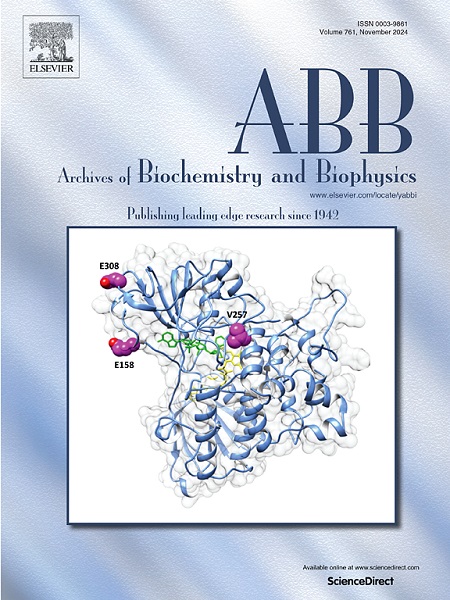Naringin in repairing articular cartilage injury by activating TGF-β/Smad signaling pathway to attenuate inflammatory response
IF 3.8
3区 生物学
Q2 BIOCHEMISTRY & MOLECULAR BIOLOGY
引用次数: 0
Abstract
Naringin protects cartilage and attenuates inflammation. This study investigated the mechanism by which naringin activates the TGF-β/Smad signaling pathway to attenuate the inflammatory response and repair rabbit articular cartilage injury. A ring bone extraction drill was used to create a rabbit articular cartilage injury model. Sixteen Japanese white rabbits were divided into Sham, Mod, Nar, and Con groups and treated for 12 weeks. Compared with the Mod group, obvious signs of morphological and structural repair of cartilage injury were observed in the Nar group. The ICRS, BV/TV, and BS/TV scores increased, whereas the Wakitani and Tb.Sp scores decreased. Furthermore, ADAMTS-5 levels were significantly reduced, and TGF-β1 levels were significantly increased. The average light density of P-Smad3 in the repaired tissue was significantly elevated, whereas that of MMP-13 was significantly reduced. Compared with that in the Sham group, the transcription and expression levels of TβRII, type II collagen, P-TβRII, and P-Smad2 in the repair tissues of the Mod group were lower. This was reversed in the Nar group. Therefore, naringin administration can improve the morphology and structure of articular cartilage injury, reduce the concentration and expression levels of pro-inflammatory factors in the joint fluid and repair tissues, and increase the concentrations and expression levels of anti-inflammatory factors in the joint fluid and repair tissues. Thus, naringin exerts a positive effect by reducing the inflammatory response and repairing articular cartilage injury. This mechanism is closely related to the activation of the TGF-β/Smad signaling pathway.

求助全文
约1分钟内获得全文
求助全文
来源期刊

Archives of biochemistry and biophysics
生物-生化与分子生物学
CiteScore
7.40
自引率
0.00%
发文量
245
审稿时长
26 days
期刊介绍:
Archives of Biochemistry and Biophysics publishes quality original articles and reviews in the developing areas of biochemistry and biophysics.
Research Areas Include:
• Enzyme and protein structure, function, regulation. Folding, turnover, and post-translational processing
• Biological oxidations, free radical reactions, redox signaling, oxygenases, P450 reactions
• Signal transduction, receptors, membrane transport, intracellular signals. Cellular and integrated metabolism.
 求助内容:
求助内容: 应助结果提醒方式:
应助结果提醒方式:


